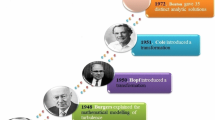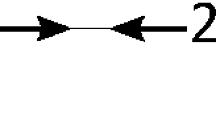Abstract
In this Festschrift contribution in honor of Prof. Maurizio Persico, we present a systematic derivation and comprehensive assessment of several integrators for quantum–classical time-dependent Schrodinger (TD-SE) and Liouville (QCLE) equations. Our formalism is rooted in the basis set reprojection approach, but it naturally leads to a family of local diabatization (LD) integrators, including the one pioneered by Prof. Persico and co-workers. The formalism naturally accounts for trivial state crossing effects and helps solve related phenomena that often pose significant numerical problems in nonadiabatic molecular dynamics simulations. We adapt the LD-based methods for the QCLE integration. We generalize the symmetric splitting integrator proposed by one of us earlier and demonstrate how it can be applied to integrate both TD-SE and QCLE. Our analysis and computations suggest that the reprojection approach is critical for capturing correct qualitative dynamics in trivial crossing regimes, but the proper integration approach is still needed for high accuracy of calculations in general case. Our computations also reveal an interesting coherence discontinuity effect introduced by the LD approximation. We provide a detailed discussion of the algorithms and their implementation in the open-source Libra software and present their comprehensive assessment using several well-designed model problems.





Similar content being viewed by others
References
Chu W, Zheng Q, Prezhdo OV et al (2020) Low-frequency lattice phonons in halide perovskites explain high defect tolerance toward electron-hole recombination. Sci Adv 6:eaaw7453
Chu W, Saidi WA, Zhao J, Prezhdo OV (2020) Soft lattice and defect covalency rationalize tolerance of β-CsPbI3 perovskite solar cells to native defects. Angew Chem Int Ed 59:6435–6441
Guo H, Chu W, Zheng Q, Zhao J (2020) Tuning the carrier lifetime in black phosphorene through family atom doping. J Phys Chem Lett 11:4662–4667
Akimov AV (2021) Excited state dynamics in monolayer black phosphorus revisited: accounting for many-body effects. J Chem Phys 155:134106
Grimaldi G, Crisp RW, ten Brinck S et al (2018) Hot-electron transfer in quantum-dot heterojunction films. Nat Commun 9:2310
Jiang X, Zheng Q, Lan Z et al (2021) Real-time GW-BSE investigations on spin-valley exciton dynamics in monolayer transition metal dichalcogenide. Sci Adv 7:3759
Shi Y, Prezhdo OV, Zhao J, Saidi WA (2020) Iodine and sulfur vacancy cooperation promotes ultrafast charge extraction at MAPbI3/MoS2 interface. ACS Energy Lett 5:1346–1354
Akimov AV, Asahi R, Jinnouchi R, Prezhdo OV (2015) What makes the photocatalytic CO2 reduction on N-doped Ta2O5 efficient: insights from nonadiabatic molecular dynamics. J Am Chem Soc 137:11517–11525
Cheng C, Fang W-H, Long R, Prezhdo OV (2021) Water splitting with a single-atom Cu/TiO2 photocatalyst: atomistic origin of high efficiency and proposed enhancement by spin selection. J Am Chem Soc Au 1:550–559
Niu X, Bai X, Zhou Z, Wang J (2020) Rational design and characterization of direct Z-scheme photocatalyst for overall water splitting from excited state dynamics simulations. ACS Catal 10:1976–1983
Gumber S, Agrawal S, Prezhdo OV (2022) Excited state dynamics in dual-defects modified graphitic carbon nitride. J Phys Chem Lett 13:1033–1041
Nelson TR, Ondarse-Alvarez D, Oldani N et al (2018) Coherent exciton-vibrational dynamics and energy transfer in conjugated organics. Nat Commun 9:2316
Nelson T, Fernandez-Alberti S, Roitberg AE, Tretiak S (2017) Electronic delocalization, vibrational dynamics, and energy transfer in organic chromophores. J Phys Chem Lett 8:3020–3031
Andrea Rozzi C, Maria Falke S, Spallanzani N et al (2013) Quantum coherence controls the charge separation in a prototypical artificial light-harvesting system. Nat Commun 4:1602
Feit MD, Fleck JA (1983) Solution of the Schrödinger equation by a spectral method II: vibrational energy levels of triatomic molecules. J Chem Phys 78:301–308
Raab A, Worth GA, Meyer H-D, Cederbaum LS (1999) Molecular dynamics of pyrazine after excitation to the S2 electronic state using a realistic 24-mode model Hamiltonian. J Chem Phys 110:936–946
Greene SM, Batista VS (2017) Tensor-train split-operator Fourier transform (TT-SOFT) method: multidimensional nonadiabatic quantum dynamics. J Chem Theory Comput 13:4034–4042
Gancewski M, Jóźwiak H, Quintas-Sánchez E et al (2021) Fully quantum calculations of O2–N2 scattering using a new potential energy surface: collisional perturbations of the oxygen 118 GHz fine structure line. J Chem Phys 155:124307
Smith B, Akimov AV (2020) Modeling nonadiabatic dynamics in condensed matter materials: some recent advances and applications. J Phys: Condens Matter 32:073001
Wang L, Akimov A, Prezhdo OV (2016) Recent progress in surface hopping: 2011–2015. J Phys Chem Lett 7:2100–2112
Tully JC, Preston RK (1971) Trajectory surface hopping approach to nonadiabatic molecular collisions: the reaction of H+ with D2. J Chem Phys 55:562–572
Tully JC (1990) Molecular dynamics with electronic transitions. J Chem Phys 93:1061–1071
Drukker K (1999) Basics of surface hopping in mixed quantum/classical simulations. J Comput Phys 153:225–272
Nelson TR, White AJ, Bjorgaard JA et al (2020) Non-adiabatic excited-state molecular dynamics: theory and applications for modeling photophysics in extended molecular materials. Chem Rev 120:2215–2287
Floß G, Saalfrank P (2015) The photoinduced E → Z isomerization of bisazobenzenes: a surface hopping molecular dynamics study. J Phys Chem A 119:5026–5037
Akimov AV (2016) Libra: An open-source “methodology discovery” library for quantum and classical dynamics simulations. J Comput Chem 37:1626–1649
Shakiba M, Smith B, Li W et al (2022) Libra: A modular software library for quantum nonadiabatic dynamics. Softw Impacts 14:100445
Akimov AV, Prezhdo OV (2014) Advanced capabilities of the PYXAID program: integration schemes, decoherence effects, multiexcitonic states, and field-matter interaction. J Chem Theory Comput 10:789–804
Fernandez-Alberti S, Roitberg AE, Nelson T, Tretiak S (2012) Identification of unavoided crossings in nonadiabatic photoexcited dynamics involving multiple electronic states in polyatomic conjugated molecules. J Chem Phys 137:014512
Ryabinkin IG, Izmaylov AF (2017) Mixed quantum-classical dynamics using collective electronic variables: a better alternative to electronic friction theories. J Phys Chem Lett 8:440–444
Wang L, Prezhdo OV (2014) A simple solution to the trivial crossing problem in surface hopping. J Phys Chem Lett 5:713–719
Temen S, Akimov AV (2021) A simple solution to trivial crossings: a stochastic state tracking approach. J Phys Chem Lett 12:850–860
Granucci G, Persico M, Toniolo A (2001) Direct semiclassical simulation of photochemical processes with semiempirical wave functions. J Chem Phys 114:10608–10615
Plasser F, Granucci G, Pittner J et al (2012) Surface hopping dynamics using a locally diabatic formalism: charge transfer in the ethylene dimer cation and excited state dynamics in the 2-pyridone dimer. J Chem Phys 137:22A514
Meek GA, Levine BG (2014) Evaluation of the time-derivative coupling for accurate electronic state transition probabilities from numerical simulations. J Phys Chem Lett 5:2351–2356
Shenvi N, Subotnik JE, Yang W (2011) Phase-corrected surface hopping: correcting the phase evolution of the electronic wavefunction. J Chem Phys 135:024101
Mai S, Marquetand P, González L (2018) Nonadiabatic dynamics: the SHARC approach. Wiley Interdiscip Rev Comput Mol Sci 8:e1370
Akimov AV (2018) A simple phase correction makes a big difference in nonadiabatic molecular dynamics. J Phys Chem Lett 9:6096–6102
Smith B, Akimov AV (2019) A comparative analysis of surface hopping acceptance and decoherence algorithms within the neglect of back-reaction approximation. J Chem Phys 151:124107
Dutra M, Garashchuk S, Akimov AV (2023) The quantum trajectory-guided adaptive Gaussian methodology in the Libra software package. Int J Quantum Chem 123:e27078
Mandal A, Yamijala SS, Huo P (2018) Quasi-diabatic representation for nonadiabatic dynamics propagation. J Chem Theory Comput 14:1828–1840
Akimov AV, Long R, Prezhdo OV (2014) Coherence penalty functional: A simple method for adding decoherence in ehrenfest dynamics. J Chem Phys 140:194107
Akimov AV (2022) Fundamentals of trajectory-based methods for nonadiabatic dynamics. In: Reference module in chemistry, molecular sciences and chemical engineering. Elsevier
Mukamel S (1995) Principles of nonlinear optical spectroscopy. Oxford University Press, New York
Akimov AV, Shakiba M, Smith B, Dutra M, Sato K, Temen S, Li W, Sun X, Stippell L (2023). Quantum-Dynamics-Hub/libra-code: significant refactoring of the code, Local diabatization and more (v5.4.0). Zenodo. https://doi.org/10.5281/zenodo.7846986
Verlet L (1967) Computer “Experiments” on classical fluids. I. Thermodynamical properties of Lennard-Jones molecules. Phys Rev 159:98–103
Hack MD, Truhlar DG (2001) A natural decay of mixing algorithm for non-Born–Oppenheimer trajectories. J Chem Phys 114:9305–9314
Zhu C, Nangia S, Jasper AW, Truhlar DG (2004) Coherent switching with decay of mixing: an improved treatment of electronic coherence for non-Born–Oppenheimer trajectories. J Chem Phys 121:7658–7670
Granucci G, Persico M, Zoccante A (2010) Including quantum decoherence in surface hopping. J Chem Phys 133:134111
Plasser F, Mai S, Fumanal M et al (2019) Strong influence of decoherence corrections and momentum rescaling in surface hopping dynamics of transition metal complexes. J Chem Theory Comput 15:5031–5045
Shakiba M, Akimov AV (2023) AkimovLab/Project_NAMD_Integrators: Project NAMD integrators (v1.0.0). Zenodo. https://doi.org/10.5281/zenodo.7659020
Acknowledgements
Support of computations is provided by the Center for Computational Research at the University at Buffalo.
Funding
This work was carried out with financial support from the National Science Foundation (Grant OAC-NSF-1931366).
Author information
Authors and Affiliations
Contributions
MS conducted calculations and data analysis, coded data analysis and visualization scripts, prepared figures, assembled electronic data repository, verified the code implementation; AVA implemented integrators in the Libra code, designed and guided the project, acquired funding. All authors wrote and reviewed the manuscript.
Corresponding author
Ethics declarations
Conflict of interest
The authors declare that they have no conflict of interest.
Additional information
Publisher's Note
Springer Nature remains neutral with regard to jurisdictional claims in published maps and institutional affiliations.
Supplementary Information
Below is the link to the electronic supplementary material.
Rights and permissions
Springer Nature or its licensor (e.g. a society or other partner) holds exclusive rights to this article under a publishing agreement with the author(s) or other rightsholder(s); author self-archiving of the accepted manuscript version of this article is solely governed by the terms of such publishing agreement and applicable law.
About this article
Cite this article
Shakiba, M., Akimov, A.V. Generalization of the local diabatization approach for propagating electronic degrees of freedom in nonadiabatic dynamics. Theor Chem Acc 142, 68 (2023). https://doi.org/10.1007/s00214-023-03007-7
Received:
Accepted:
Published:
DOI: https://doi.org/10.1007/s00214-023-03007-7




